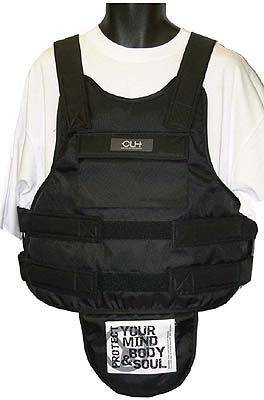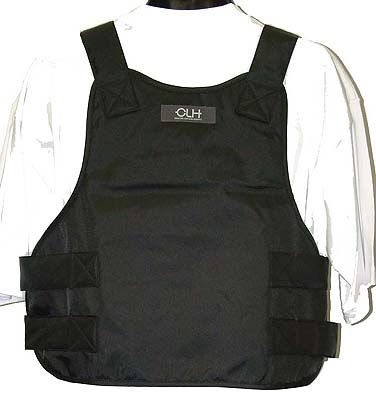Realistic-looking non-ballistic vests, available commercially through WearHiphop.com, have recently surfaced as a fashion trend. DOD PD Detective Eddie Garcia, Jr., stationed at MacDill AFB (FL), recently spotted dozens of Latino youths at a music festival wearing the vests.
 |
“At first I saw the group from a distance and assumed they were local police,” he told Police1. “As I got closer, I noticed a small, nearly unnoticeable clothing tag that started to tip me off that this may not be your typical body armor. Then, when one of the youths turned around, I realized they were not cops. They were too young. But if it weren’t for that clothing tag, which could easily be removed, I would have never been able to tell that these were not actual ballistic vests.”
Garcia agrees that the realistic appearance of the vests is troubling.
“If I approach someone who is wearing one of these, my first thought is going to be, ‘Why is this guy wearing body armor? He must be armed and fully prepared for a fight!’”
With that understandable presumption of a brewing battle comes the possibility of hypersensitivity to movement by the subject. “Am I susceptible to shooting someone who is wearing a fake vest as a fashion statement if he makes even the slightest movement that could be considered furtive?” he questions.
Two other concerns Garcia shares are hesitation and shot placement.
“If an officer spots what appears to be body armor in an encounter that justifies and requires the use of deadly force, he or she could potentially hesitate for a moment while considering their target,” he says. “This could give an armed suspect the time he needs to gain an advantage.
“If the officer assumes that shots to center mass will be useless because of the apparent protection,” he continues, “he or she may forego the shot that has a higher probability of landing accurately and decide to move to another target, like the head, which is much more difficult to hit.”
 |
So what’s the solution? Garcia has a few thoughts.
First, he suggests having the subject remove the vest. “If he refuses, you may have cause for alarm,” he told Police1. “They could be hiding a weapon under there or it could in fact be real armor. You just don’t know. So for the sake of officer safety, you need to have that vest removed.”
Next, he suggests that in a situation warranting deadly force, center mass should not be overlooked as a target, even if it appears to be protected by armor. “Take the center mass shots first, the ones that stand the most likelihood of landing on target,” he says. “Then if they don’t work, consider alternative shot placement.”
Last, as in any encounter, you should process every piece of intel you get from a subject, including the fact that he’s wearing something that appears to be body armor, and raise your levels of awareness and preparedness accordingly. Is that body armor sending you a message that this person is ready for a fight? Maybe, maybe not. But you need to be ready regardless.
Special thanks to Reserve Deputy John Delgado with Wakulla Co. (FL) SD for sharing the original alert.












